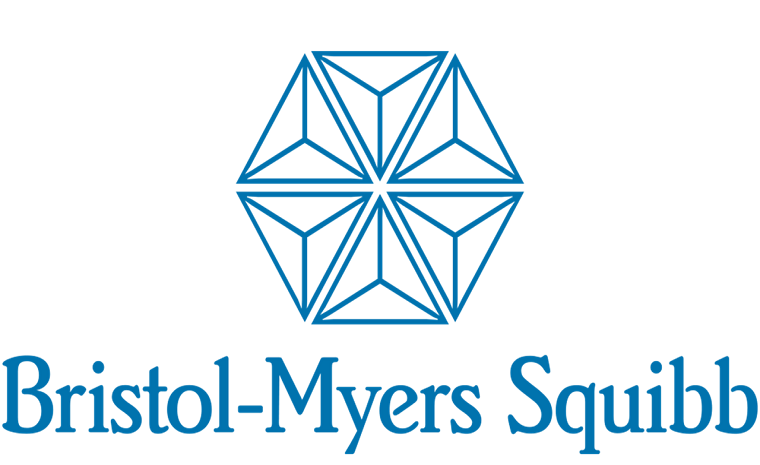Bristol-Myers Squibb issued the following announcement on June 17.
Bristol-Myers Squibb Company (NYSE:BMY) today announced that the ELOQUENT-3 trial, an international Phase 2 study evaluating the addition of Empliciti (elotuzumab) to pomalidomide and low-dose dexamethasone (EPd) in patients with relapsed/refractory multiple myeloma (RRMM), achieved its primary endpoint, showing a statistically significant and clinically meaningful improvement in progression-free survival (PFS) for patients treated with EPd compared with pomalidomide and dexamethasone (Pd) alone. ELOQUENT-3 is the only randomized, active-controlled trial to investigate a pomalidomide-based triplet combination in patients with RRMM who received at least two prior therapies, including lenalidomide and a proteasome inhibitor (PI).
Patients randomized to EPd experienced a 46% reduction in risk of disease progression (HR 0.54; 95% CI: 0.34 to 0.86, p=0.0078) compared with patients randomized to Pd alone, with median PFS, the study’s primary endpoint, of 10.3 months (95% CI: 5.6 to not estimable) compared with 4.7 months (95% CI: 2.8 to 7.2) in Pd patients. The PFS benefit experienced among patients randomized to EPd was consistent among patients who had received two to three prior lines of therapy (HR 0.55; 95% CI: 0.31 to 0.98) and four or more prior lines of therapy (HR 0.51; CI 95%: 0.24 to 1.08). The safety profile for EPd was consistent with prior findings for Empliciti and pomalidomide regimens. The full results will be presented in a late-breaking oral session on Sunday, June 17, at 12:30 CEST during the 23rd Congress of the European Hematology Association in Stockholm, Sweden.
“The ELOQUENT-3 trial is the first randomized trial comparing the standard of care, pomalidomide and low dose dexamethasone, with and without the addition of a monoclonal antibody. These data support the hypothesis that the addition of elotuzumab to pomalidomide and dexamethasone elicits a synergistic effect and prolongs, significantly, the progression-free survival of heavily pretreated patients with myeloma, regardless of the number of prior therapies,” said Meletios A. Dimopoulos, M.D., professor and chairman of the Department of Clinical Therapeutics at the National and Kapodistrian University of Athens, School of Medicine. “We believe that EPd, if approved by regulatory authorities, could become an important potential treatment option for patients with relapsed/refractory multiple myeloma whose disease has progressed after treatment with lenalidomide and a proteasome inhibitor.”
Twice as many patients randomized to EPd responded to therapy compared to patients randomized to Pd alone. Patients randomized to EPd demonstrated an overall response rate (ORR) of 53% (95% CI: 40 to 66), compared with 26% (95% CI: 16 to 40) among patients randomized to Pd. Time to first response was comparable for patients receiving EPd and Pd at 1.95 and 1.91 months, respectively. Median duration of response had not been reached among patients randomized to EPd at time of analysis. Overall survival, a secondary endpoint, although not mature at this time, showed a positive trend favoring EPd over Pd alone (HR 0.62; 95% CI: 0.30 to 1.28).
“Based on survival data we’ve seen to date in relapsed or refractory multiple myeloma, Empliciti in combination with lenalidomide and dexamethasone has been established as an important treatment option for patients,” said Jeffrey Jackson, Ph.D., hematology development lead, Bristol-Myers Squibb. “These new data evaluating the EPd combination build on our commitment to understanding the full potential of Empliciti when used in different combinations. We look forward to discussing these data with health authorities.”
Treatment-related Grade 3-4 adverse events (AEs) were comparable between EPd and Pd groups. Any-grade infections occurred in 65% of patients in both arms. Rates of the most commonly occurring Grade 3-4 hematologic AEs, neutropenia and anemia, were lower among patients receiving EPd (13% and 10%, respectively) than patients receiving Pd (27% and 20%), despite longer exposure within the EPd arm and similar dose intensity of pomalidomide between arms. AEs led to discontinuation in 18% of patients in the EPd arm, compared with 24% of patients in the Pd arm.
Original source can be found here.











 Alerts Sign-up
Alerts Sign-up